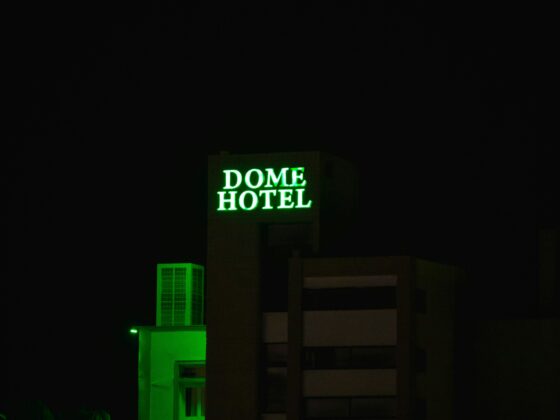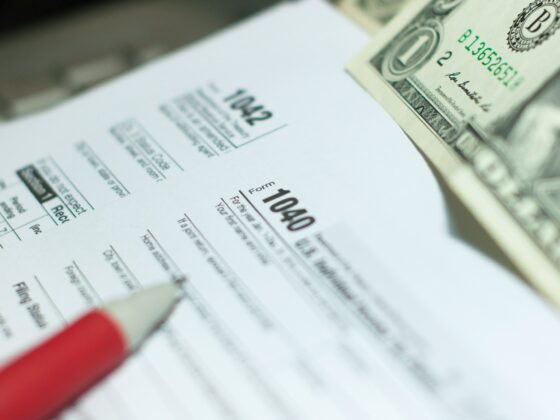What is revenue management?
So, what is revenue management and why does it matter?
Revenue management is the practice of using data and analytics to predict demand and adjust pricing to achieve optimal total revenue. In simple terms, it’s the art of selling the right product, to the right customer, at the right price, at the right time.
The “right price” isn’t just about maximizing profit – it’s also about aligning with guest expectations and meeting market demand. In the hospitality industry, this balance is key to both customer satisfaction and financial success.
Because hotels operate with high fixed costs and low marginal costs, hotel rooms are considered perishable products. Once a night passes, an unsold room represents lost revenue. That’s why effective revenue management is critical – it allows hotels to dynamically adjust pricing, segment customers and capture the most value from fluctuating demand.

Core areas of revenue management
Now that we’ve covered why revenue management is so essential, let’s explore its core areas.
Maximizing revenue
Revenue optimization is the ultimate goal of any revenue management strategy. It’s not just about selling more rooms, but also about increasing total revenue across all revenue streams. In other words, it ensures you’re getting all your “rights” in a row – the right product, the right customer, the right time and the right price.
Demand forecasting
Demand forecasting uses historical data, market trends and predictive analysis to anticipate future demand. By comparing data from the same period in previous years and factoring in external influences (like holidays or events), you can predict occupancy levels more accurately. This allows you to adjust pricing and inventory proactively – smoothing out slow periods and maximizing peak ones.
Dynamic pricing
Dynamic pricing is one of the most powerful tools in revenue management. It involves continuously adjusting room rates in real time based on market conditions, customer behavior, and demand levels. The goal? To ensure prices always reflect current market value and maximize profitability.
Inventory control
Inventory control ensures your rooms are being sold at the right price, through the right channels, to achieve optimal occupancy rates. By analyzing availability and distribution, you can decide how many rooms to allocate to different platforms while maintaining a healthy Average Daily Rate (ADR) and strong overall performance.
Performance metrics
Revenue management relies on a set of key performance indicators (KPIs) to measure success. These include:
- RevPAR (Revenue Per Available Room)
- ADR (Average Daily Rate)
- Occupancy rate
- GOPPAR (Gross Operating Profit Per Available Room)
- TRevPAR (Total Revenue Per Available Room)
- NRevPAR (Net Revenue per Available Room)
Together, these important metrics help hotel owners and revenue managers assess performance, identify opportunities and make informed decisions about pricing and strategy.
Why revenue management metrics matter
Balancing pricing, sales, marketing and operations is essential for profitability – and metrics are the guideposts that keep these functions aligned. When each area works together in harmony, hotels can maximize revenue while maintaining a great guest experience.
- Pricing determines perceived value and ensures profitability.
- Sales drives booking volume and helps you boost your bottom line.
- Marketing generates demand and positions your brand competitively.
- Operations ensure service quality without overspending or compromising standards.
If these areas aren’t balanced, you risk inefficiency and poor retention. For example, a marketing campaign may successfully boost bookings – but if operations aren’t ready for the surge, guest satisfaction could take a hit, damaging your reputation and long-term revenue.
That’s why metrics matter: they help you identify imbalances early and keep every part of your business working in sync.
How metrics guides operational decisions
Revenue management metrics do more than track performance – they directly inform operational decisions. By forecasting demand, hotels can adjust staffing levels, manage inventory, and plan resources more effectively.
Here’s how each key metric helps guide decision-making:
- RevPAR helps determine whether your average rate aligns with your occupancy goals and overall revenue targets.
- Occupancy rate shows how effective your marketing and pricing strategies are in driving bookings.
- ADR indicates how much guests are willing to pay, and how well your rates compare against competitors.
- RevPOR expands your focus beyond room sales, incorporating additional revenue streams such as food and beverage or ancillary services.
- GOPPAR gives a holistic view of profitability by balancing total revenue against operating costs.
Together, these insights help you forecast, adjust, and fine-tune operations – ensuring every department contributes to financial health and guest satisfaction.

New revenue management metrics
Technology has changed not only what’s possible, but what’s measurable. A new generation of hospitality metrics has emerged and revenue managers who adapt fast stand to see the biggest rewards. So, what are these new metrics exactly?
RevPAM, not RevPAR
RevPAR gives you data from only one income source and is based on an occupancy rate that’s also an incomplete representation. When you limit your revenue tracking to rooms, you only focus on one part of the guest journey: the room reservation. RevPAM (revenue per available square meter) solves this problem. It’s a more flexible metric that allows you to analyze rooms only (which rooms have the best utilization to revenue ratio) or to track your entire hotel space.
🏆 Why it works It’s a more holistic approach that captures more touchpoints like upselling – pre-stay and at your property – and F&B. You can boost RevPAM not only through room rates but through add-ons and experiences. It will shine a light on underperforming areas, too.
💡 Get inspired Let’s say you identify that individual meeting spaces have the best RevPAM, while your conference room lags behind, making it the least efficient space.
The next step would be to adjust your marketing budget or introduce some operational changes. You may even decide to convert the conference room into another type of space – these are the kinds of insights that calculating RevPAM provides.
Revenue sources
It’s time to step away from the default mindset that your rooms are your only resource. To rely on a single source of revenue, such as rooms, increases the risk to your business should something beyond your control impact the market. The most successful hotels create engaging, revenue-boosting spaces throughout the property, from rooftops to lobbies to F&B.
🏆 Why it works It increases your customer reach, often into demographics that you may have previously struggled to attract. Visitors who enjoy a signature drink from your bar or a session at your gym are more likely to become repeat customers who also book other services and experiences.
💡 Get inspired In the last two years, we’ve seen a huge boom in hotels offering additional bookable services. These include:
- Parking spots – in 2023, The Julius generated €107,000 revenue from its 29 parking spaces.
- Meeting spaces – with hourly access, you can maximize your inventory and sell the same meeting room multiple times a day.
- Co-working spaces (often in transformed lobbies) – The Social Hub has 350 co-working spaces in one property.
- Day-use rooms (sold by the day and by the hour) – in its first few months, Compagnie Hôtelière de Bagatelle made €15,000 in additional day use revenue.
- Event spaces (weddings, exhibitions, work teambuilding) – in just one month, Pierres d’Histoire made €88,000 in wedding reservations.
- Health and fitness (opened up to visitors as well as guests) – a connected tech ecosystem lets you track all spending in a unified customer profile, even if they’re not an overnight guest.
Competitor comparison
Your comp set is a group of hotels that offer similar products and services to your target customers and compete for the same market share. Research your competitors with online tools such as STR reports, OTA websites and review platforms – you want to be looking for occupancy, ADR, RevPAR, ARI, MPI and RGI.
🏆 Why it works Benchmarking your KPIs shows you how you compare and lets you identify any gaps or opportunities for improvement. It allows you to look beyond your hotel’s data and understand broader market trends. This perspective is crucial, especially in times of global uncertainty.
💡 Get inspired These are the three common areas to focus on as a revenue manager:
- Relative performance and market positioning Are you and your competitors losing out on business because a big event got cancelled? Or are your rates just way too high?
- Price elasticity Getting the most complete picture of your market helps you form sustainable pricing strategies.
- Getting ahead of competitors Knowledge is power – what if you were the only hotel in the area with rooms left to sell on a specific date?
Top 10 tips for utilizing revenue management metrics
Having your revenue management metrics is only the first step – the real value lies in knowing how to use them. Here are ten practical tips to help you make the most of your data and drive stronger revenue results.
1. Understand key metrics
Before you can act, you need to understand what you’re measuring. Focus on the core metrics – RevPAR, ADR, Occupancy Rate, and GOPPAR – as these will form the foundation of your revenue management strategy. Knowing what each metric means and how they interact gives you the insight needed to make informed decisions.
2. Set realistic goals
Ambitious targets are great, but they need to be achievable. Base your goals on historical data, accurate forecasting, and industry benchmarks. This ensures your targets are grounded in reality and gives you a clear roadmap for pricing strategy, marketing spend, and sales activity. Setting realistic goals helps your team stay focused and motivated and prevents disappointment down the line.
3. Monitor market trends
Keep a close eye on your competitive set and stay aware of what’s happening in your local market. External factors, such as local events, school holidays or peak travel seasons, can all affect booking patterns and demand. Regular market monitoring allows you to adjust pricing and promotions proactively, instead of reacting when it’s too late.
4. Leverage technology
Technology is your best ally in modern revenue management. Invest in a Revenue Management System, like Atomize, to automate data collection, forecasting and dynamic pricing. This will not only make your predictions and revenue management more accurate but also save time through automation.
Don’t overlook AI revenue management either. AI can analyze large data sets in seconds, helping you detect trends and anomalies that might otherwise go unnoticed. When technology, automation and analytics work together, they give you the visibility and agility needed to stay ahead of the competition.
5. Segment your market
Not all guests are the same – and your pricing shouldn’t treat them as if they are. Identify your key segments based on booking channel, purpose of travel and demographics. This helps you understand how much different customer groups are willing to pay and what they value most. With proper segmentation, you can tailor offers, packages and marketing campaigns that resonate with each audience and maximize conversion rates.
6. Review performance regularly
Regularly reviewing your performance is essential for continuous improvement. An RMS will help you track results and generate reports automatically, but it’s up to you to interpret the data and act on it.
Monitor your KPIs on a weekly, monthly and quarterly basis. Spot emerging trends early, identify what’s working and make adjustments as needed. The more frequently you analyze your metrics, the faster you can adapt your pricing and strategy to market conditions.
7. Optimize pricing strategies
Pricing optimization isn’t a one-time task – it’s an ongoing process. Use your demand forecasts, booking pace and competitor data to adjust prices dynamically throughout the year. This ensures you’re maximizing occupancy during slow periods and capitalizing on peak demand when rates can be higher.
8. Boost ancillary revenue
Revenue management doesn’t end with rooms. Look for opportunities to grow ancillary revenue from areas like food and beverage, spa, parking, upsells and other extra services. These additional streams not only increase overall profitability but also elevate the guest experience, setting your property apart from competitors. Every guest interaction is a chance to create value – both for them and for your bottom line.
9. Train your team
Your revenue management strategy is only as strong as the people implementing it. Make sure your team understands the fundamentals of revenue management and the key KPIs you’re tracking.
When staff are trained and engaged, they can make informed decisions on the ground – whether it’s upselling, managing distribution or identifying opportunities to improve revenue. Involving your team creates shared ownership of results and helps everyone work toward the same profitability goals.
10. Experiment and improve
Revenue management is a constant cycle of testing and learning. Experiment with new pricing models, distribution strategies and promotional offers – then measure the impact.
Use data to understand what works, what doesn’t and why. The most successful hotels treat revenue management as a living process, continuously evolving based on feedback and performance.
Conclusion
Revenue management metrics turn raw data into actionable insight – helping you boost profitability while shaping a better guest experience. Understanding and using these metrics effectively allows you to make informed decisions, adjust to market conditions, and build long-term success.
Want to go deeper? Check out our comprehensive guide to revenue management to learn more about the tools and techniques that can help your hotel stay ahead.
Hotel revenue management metrics FAQs
What are the key metrics of hotel revenue management that every hotelier should monitor?
The most important metrics include RevPAR, ADR, Occupancy Rate, and GOPPAR – the core indicators of hotel performance and profitability.
How do you use revenue management metrics to optimize pricing strategies?
These metrics help you dynamically adjust rates based on demand forecasts, booking trends and market shifts, ensuring prices always align with real-time conditions.
How can I get started tracking new hotel revenue management metrics?
Start by implementing a Revenue Management System, ideally integrated with your PMS. This enables you to track key metrics in real time and make fast, data-informed decisions.
How often should revenue management metrics be reviewed?
Review your revenue metrics on a weekly, monthly and quarterly basis to continually optimize your strategy based on live performance and market fluctuations.
Do I need a revenue management system (RMS) for my hotel?
Yes – an RMS can significantly enhance your forecasting, pricing accuracy and operational efficiency. It helps automate manual tasks, reduce errors and improve decision-making across your hotel’s revenue strategy.
Grab your copy of the ultimate guide for revenue managers

Call us teasers, but what you saw – and hopefully enjoyed – was only a sneak peek into our guide, The New Era of Hospitality Metrics for Revenue Managers. In it, you’ll find 10 must-follow metrics and a list of powerful revenue management integrations for a successful business.








